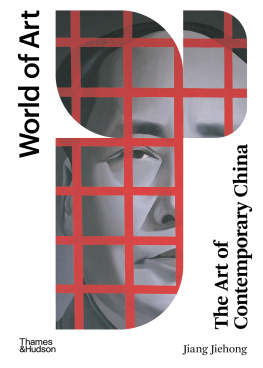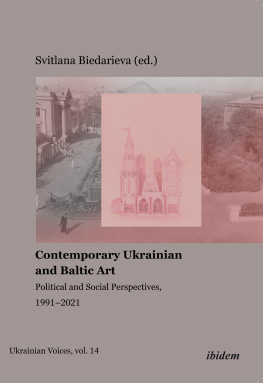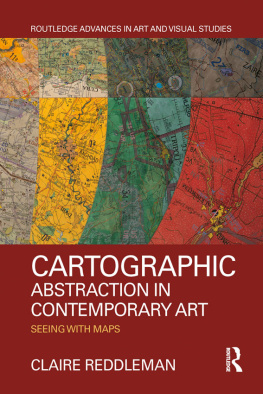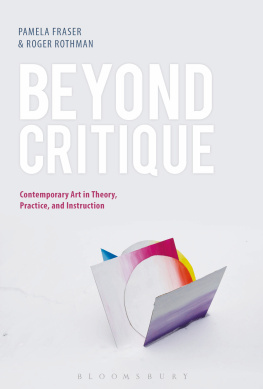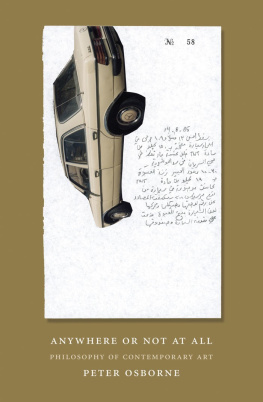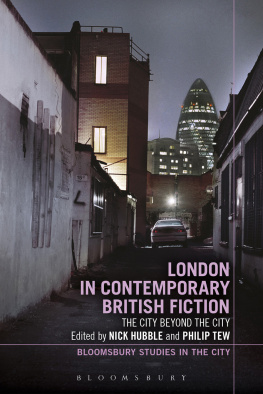Contents

In the Mind but Not from There
In the Mind
but Not from There
Real Abstraction
and Contemporary Art
Edited by Gean Moreno

First published by Verso 2019
Contributions Individual Contributors 2019
Collection Gean Moreno 2019
All rights reserved
The moral rights of the authors have been asserted
1 3 5 7 9 10 8 6 4 2
Verso
UK: 6 Meard Street, London W1F 0EG
US: 20 Jay Street, Suite 1010, Brooklyn, NY 11201
versobooks.com
Verso is the imprint of New Left Books
ISBN-13: 978-1-78873-069-3
ISBN-13: 978-1-78873-643-5 (HBK)
ISBN-13: 978-1-78873-070-9 (UK EBK)
ISBN-13: 978-1-78873-071-6 (US EBK)
British Library Cataloguing in Publication Data
A catalogue record for this book is available from the British Library
Library of Congress Cataloging-in-Publication Data
Names: Moreno, Gean, 1972- editor.
Title: In the mind but not from there : real abstraction and contemporary art / edited by Gean Moreno.
Description: Brooklyn : Verso, 2019. | Includes bibliographical references.
Identifiers: LCCN 2018059840| ISBN 9781788730693 (paperback) | ISBN 9781788736435 (hardback)
Subjects: LCSH: Art, Modern21st centuryPhilosophy. | Art and societyHistory21st century. | Marx, Karl, 1818-1883Aesthetics. | BISAC: ART / Criticism & Theory. | ART / Art & Politics. | ART / History / Contemporary (1945-).
Classification: LCC N6497 .I53 2019 | DDC 709.05dc23
LC record available at https://lccn.loc.gov/2018059840
Typeset in Sabon by MJ & N Gavan, Truro, Cornwall
Printed in the UK by CPI Group
Contents
Introduction
Gean Moreno
In the last decade or so, the lockstep incursion of flat ontologies, notions of quasi-sentient matter, slime-lined and mushroom-sprouting vitalisms, and network-everything into contemporary art discourse and exhibitions has been hard to miss. Embraced with steady fanfare, a slushy and exhilaratingly immoderate carnival of chemistry and composting across our discursive landscape has us querying the unfathomable inexhaustibility of objects, their capacity to pipeline unwieldy forces and transgress the tiny territory of the real available to human access. But as excitement for this vivacious and mud-splattered thinking spikes, ostensibly terraforming a new plateau from which to assess our cultural artifacts, skepticism tactfully summons sharpened attention. Slight misgivings we felt all along for the conceptual pirouettes encouraged by this complicity with the powers of the object or the Earth or the cosmos find some oxygen and molt their modesty. As they are elaborated, it is evident that these suspicions cant be hastily explained by charging intellectual miserliness before new proposals or blindness to the ways in which nonhuman forces are implicated in the structuring of things. It is, rather, that the scales and temporalities, the profound entanglements of apparatus and knowledge production, on which these discourses often rely and reflect in their native conceptual neighborhoods and disciplinary enclosures become, in transit and translation, something quite minor: the supposedly intractable potency and bottomless ineffability of art objects. Weird forms are taken for inscrutable structures that harbor alien things and purposes; sculptures are confused for the mysterious artifacts that fall to earth in cheap sci-fi movies and unravel everything. The agential capacity of the inanimate, and the supra-and subhuman organic, becomes, by sheer force of spectatorial desire and zany writing, the disproportionate and timeless power of the nonstandard little thing, perched on its pedestal or gawking back from the wall, to purportedly vectorialize forces and tap dimensions that we can only know vicariously and imperfectly. The dilution of complexity and swap of scale feels rotten enough to put the stench of swindle in all this. As these objects begin to feel like sham prisms to the Vastness, we draw from the ecstatic rhetoric that conveys their supposed radical dynamics the contours of a hidden transaction, a suppressed need, which faintly registers in an eagerness to adapt and graduate discourses that subjectivize everything into dominant cultural interpretative machinery in a world increasingly structured by algorithmic governmentality, financialization and global logistics. Its a world in which abstraction seems less a thing without referenceas modernists used to boast about certain paintings and morphologiesthan the ultimate reference of everything.
Its not that our diagnostic powers are exhausted by pointing out, once again, that the old pot mystifies a fragmented process of production, along with the ruination of subjectivity that this fragmentation entails. The world is of another order, every inch of it quantifiable, and we cannot but slip into weirder knots of thinking as we try to apprehend it. But its also not that, in fear of falling out of step with the ostensible leading edge of cultural discourse, of missing the leap over the last barricade that keeps us from some exo-human plenitude and dispersion, we need to discard the critical ways in which we once approached the pot. Whatever the pitfalls and paradoxical uses of art production and interpretation that retains critique as its dominant modesomething that even those best known for this must have begun to lament, shipwrecked as they surely feel in the toss between their stringent persistence and the unending ineffectiveness of the resultsthese types of exercises at least seek to understand the art object within a material matrix of institutions, economic pressures, historical determinations and concrete modes of distribution. Champions of the supercharged object are realists about everythingexcept, of course, the material conditions in which art objects are currently embeddeda transnational socio-institutional ecology that is structured, on the one hand, by a logic of artificial asset valorization, of foreshortened incubation periods through the manipulation of price and information; and, on the other, by freedom from any need to line up with larger historical projects (aside from the neoliberal one). It is a world in which art objects, beyond their social actualization as extraordinary commodities, are subsumed into a financialization process whereby the pictures on the wall, or the .mov files on the portable drive or the unwieldy installations in freeport storage, neatly tucked in their crates, can be collateralized, leveraged and turned into currency without the actual artifacts having to return to the market and have their biographies affectedand, by extension, potentially cripple the credibility of their owners and erode some of their social prestige by being taken for investors or flippers. Through procedures such as art-backed lending, the art object ceases to merely be a safe bet against the volatility of other markets or a daring gamble, afforded by a well-guarded and opaque art market, in which merchants can pry money from the clutches of stock traders and other analogous types. The art object sets frozen capital in motion; it puts it to work. This enhanced function points to the way in which capitals most recent restructuring has found a route to reach into the very structural core of the art object and repurpose it to serve new ends, disregarding the objects self-definition as an enclosed signifying unit, embedded in historical and conventional webs. This repurposing is voracious and subsumes art objects that come from various historical periods; however, while it touches the Fragonard and the Watteau, the Picasso and the Florine Stettheimer, contemporary art bares an irrevocable tethering to this process as birthmark, as teratological blemish.




